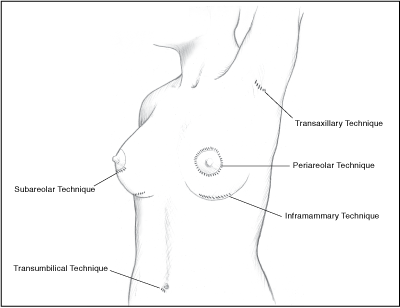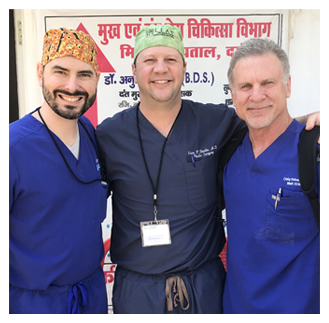
 The short answer to this question is: Absolutely!! Let me take some time today to go everything you need to know about breastfeeding after a breast augmentation, breast reduction, and breast lift. Breastfeeding your baby is, without question, very beneficial for you and your baby, so taking away that ability is avoided at all costs. Keep in mind that every woman’s body is different, so the original state of the breasts can give an indication of how much milk a mother will be able to produce after a breast augmentation. The size of the breast has no correlation with the amount of milk produced, but there are some breast types that are a risk factor for low milk production, even before surgical procedures occur. These breast types include tubular-shaped breasts, widely spaced breasts (greater than 1.5 inches of flat space between them), undeveloped breasts, and asymmetrical breasts. During breast augmentation, the implants are placed under the breast avoiding essential nerves and ducts for milk production.
The short answer to this question is: Absolutely!! Let me take some time today to go everything you need to know about breastfeeding after a breast augmentation, breast reduction, and breast lift. Breastfeeding your baby is, without question, very beneficial for you and your baby, so taking away that ability is avoided at all costs. Keep in mind that every woman’s body is different, so the original state of the breasts can give an indication of how much milk a mother will be able to produce after a breast augmentation. The size of the breast has no correlation with the amount of milk produced, but there are some breast types that are a risk factor for low milk production, even before surgical procedures occur. These breast types include tubular-shaped breasts, widely spaced breasts (greater than 1.5 inches of flat space between them), undeveloped breasts, and asymmetrical breasts. During breast augmentation, the implants are placed under the breast avoiding essential nerves and ducts for milk production.
Breast Augmentation
During a breast augmentation, where the incision is made and where the implant is placed can determine how much milk you will produce. There are a variety of incision sites, as seen in the picture, but Dr. Hobar prefers the transaxillary (armpit) site for most of his patients who are candidates. In patients with prior surgery or those who simply prefer it, he will also place the implants through the inframammary site (under the breast). The transaxillary placement is ideal for future breastfeeding as it preserves the breast tissue already there. The implant can be placed in two different ways, directly under the glandular tissue, or behind the chest muscle. Dr. Hobar only places the implant behind the chest muscle, which is ideal for breastfeeding because it does not put pressure on the glandular tissue and impede milk flow, like an implant under the glandular tissue would. This also provides increased support to hold the implant higher on the chest wall.
Breast Reduction

With advances in surgical techniques, women are increasingly able to breastfeed after a breast reduction. Surgeons are often able to preserve milk-producing tissue so you can breastfeed like normal. There are a variety of techniques for a breast reduction, but for future breastfeeding, the ones that do not completely sever the nipple and areola are preferred. Even if the nipple and areola are moved, there are several techniques that keep them intact.
Breast Lift
In most cases, there is little to no damage to the ducts and nerves during a breast lift. Typically, the nipple is repositioned, not completely separated, meaning the nerves and ducts remain intact. Each individual’s breasts are unique, so the technique performed depends on what the woman wants, what her natural breasts look like, and if there is an underlying condition (i.e. tuberous breasts due to polycystic ovary syndrome).
Tips for Increasing Milk Production
- Get as much milk out as possible in the first 2-3 weeks as this time period determines how much milk your body will produce from there on out.
- Avoid pacifiers as they can affect your baby’s latch
- Switch nurse: switch sides 3 or more times during feeding
- Try pumping between nursing
- Ultimately, the best way to deal with low milk production is to first determine the underlying cause. Talk to your doctor to help you determine the cause and how to best treat it.
For more information visit https://www.bfar.org/index.shtml. This website is dedicated to keeping breastfeeding mother’s who have had breast surgery informed and educated.






